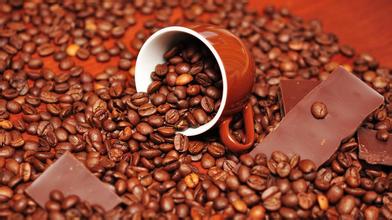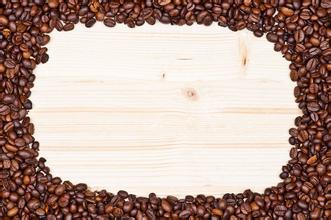Characteristics of Latin American coffee beans regional varieties produced by grinding scale treatment
Characteristics of Latin American coffee beans regional varieties produced by grinding scale treatment
The largest coffee producer, which accounts for 1/3 of the world's coffee consumption, accounts for 1/3 of the world's coffee consumption and has a place in the global coffee market, although Brazil faces several times more natural disasters than other regions. but its acreage is enough to make up for it.
There are many kinds of coffee here, but its industrial policy is large and cheap, so there is not much premium coffee, but it is a good choice for mixing other coffees.
One of the most famous is Sandos Coffee, which tastes mellow and neutral. It can be boiled directly or mixed with other kinds of coffee beans to form a comprehensive coffee. It is also a good choice.
Other kinds of Brazilian coffee, such as Rio and Parana, can be produced in large quantities because they do not need too much care. Although the taste is rough, it is a kind of high-quality and inexpensive coffee, which has its own standards because it is distributed all over the country and varies in quality (NO.2-NO.8 according to the number of sundries, NO.13--NO.19 according to the size of beans, and six grades according to taste). Almost all Arabica varieties are of good quality and stable in price. The most famous one is "Brazil Santos", which has been a necessity of blended coffee and is familiar to the public since ancient times. Recently, the "Guilma Cup" is also highly rated.
While the latter is much stronger than the strong, the environmental requirements are not high, low altitude, cold resistance can even prevent their own virus, but the taste is more astringent, the caffeine content is also relatively high, twice as much as the former.
At present, most commercial coffees (such as instant) use Robbite beans, which are roasted for about eight minutes because of their low cost. All Starbucks coffee beans use Arabica beans, but the rest is not clear.
Central and South America is the largest coffee producing area in the world, and there are countless boutique coffee here. Take Colombia, Guatemala or Brazil as an example, good coffee is enough to make people dazzling. What is the resource advantage that makes Central and South America so good?
In 1721, French naval officer Gabriel Mathieu de Clieu went through difficulties and obstacles to bring the first coffee sapling from Africa to the Latin American island of Martinique, which was the origin of coffee cultivation in Latin America. Because France was under the Bourbon dynasty, Arabica coffee grown in Latin America had another name, bourbon, which is now famous in the coffee industry. Bourbon is now an important branch of coffee in Arabica. The overall flavor of Latin American coffee is famous for its balance, and all the flavors in Latin American coffee can be found in Latin American coffee. The widespread use of wet treatment of raw beans is also one of the characteristics of Latin American coffee. A good processing process also makes its beans larger and more uniform than African coffee, with a lower defect rate.

Important Notice :
前街咖啡 FrontStreet Coffee has moved to new addredd:
FrontStreet Coffee Address: 315,Donghua East Road,GuangZhou
Tel:020 38364473
- Prev

Starbucks Guatemala Antigua Coffee American Coffee Taste processing method
The Starbucks Antigua Coffee American Coffee production method in Guatemala was followed by a series of destructive earthquakes. In 1543, Santiago de Mayor was rebuilt in Antigua and Guatemala. Another earthquake in 1717 led to a building boom. During this period, a large number of important buildings were rebuilt. Another earthquake in 1775 made the city
- Next

Where does Kenyan Coffee AA come from? introduction to the taste treatment method of flavor description in the region of Kenyan coffee
Kenya coffee AA from where the manor region flavor description taste treatment method do not underestimate Kenya's small farmers, they are the same ant soldiers, the overall production capacity is higher than large farms, about 6: 4, which is very rare in bean-producing countries. Kenyan coffee is widely appreciated by connoisseurs, thanks in large part to small farmers guarding the foothills and producing high-quality coffee. In addition, Kenya beans must be strict.
Related
- Detailed explanation of Jadeite planting Land in Panamanian Jadeite Manor introduction to the grading system of Jadeite competitive bidding, Red bid, Green bid and Rose Summer
- Story of Coffee planting in Brenka region of Costa Rica Stonehenge Manor anaerobic heavy honey treatment of flavor mouth
- What's on the barrel of Blue Mountain Coffee beans?
- Can American coffee also pull flowers? How to use hot American style to pull out a good-looking pattern?
- Can you make a cold extract with coffee beans? What is the right proportion for cold-extracted coffee formula?
- Indonesian PWN Gold Mandrine Coffee Origin Features Flavor How to Chong? Mandolin coffee is American.
- A brief introduction to the flavor characteristics of Brazilian yellow bourbon coffee beans
- What is the effect of different water quality on the flavor of cold-extracted coffee? What kind of water is best for brewing coffee?
- Why do you think of Rose Summer whenever you mention Panamanian coffee?
- Introduction to the characteristics of authentic blue mountain coffee bean producing areas? What is the CIB Coffee Authority in Jamaica?

